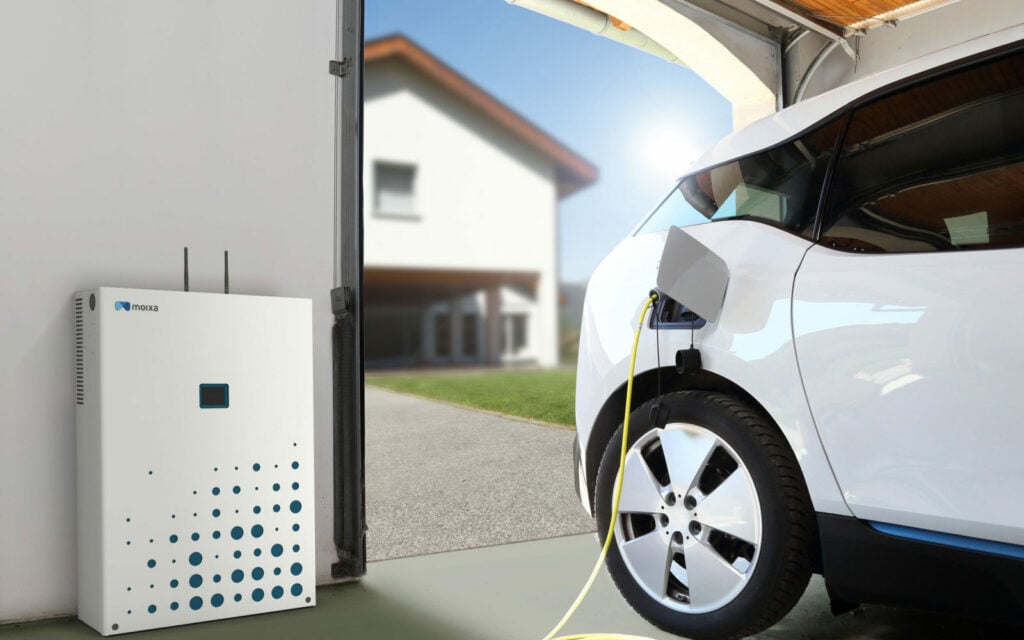
After the UK adopted its historic Climate Change Act which commits the country to net-zero by 2050, there’s understandably been a lot of discussion and debate about how it can be achieved. Recent headlines have largely focused on hydrogen and utility-scale renewables. Virtual power plants (VPPs) which aggregate small-scale distributed energy resources like rooftop solar PV and home battery storage to act as dispatchable grid assets can play a hugely beneficial role too, argues Simon Daniel, CEO and co-founder of home energy storage and smart energy management company Moixa Technology.
Renewables rising to meet the climate crisis
As the UN’s Intergovernmental Panel on Climate Change gravely stated, the next decade will prove pivotal in tackling the climate crisis. Recent flooding and wildfires sweeping across Europe make it clear that we need to act now to reduce our fossil fuel consumption and increase our adoption of renewable energy, especially across the grid.
Enjoy 12 months of exclusive analysis
- Regular insight and analysis of the industry’s biggest developments
- In-depth interviews with the industry’s leading figures
- Annual digital subscription to the PV Tech Power journal
- Discounts on Solar Media’s portfolio of events, in-person and virtual
What’s more, with a shift to electrification, including a 28% uptick in electric vehicles in the UK over the past year, the grid is coming under increasing pressure. According to the 2021 Climate Change Committee Report, electricity will move from providing 15-20% of our energy to 65% by 2050. Adopting more renewable energy across the grid is the only way we can alleviate this pressure while reducing our fossil fuel usage.
To give ourselves the best possible chance of meeting global net-zero targets, we must halve carbon in energy and mobility every decade, and completely overhaul how we generate, store and use energy. By leveraging technology, and providing a way for renewable energy to be shared back to the grid, we can ensure more renewable energy across the grid.
Distributed assets, like smart batteries, will enable more virtual power plants (VPPs) to deliver flexibility services to the grid, allowing individuals and businesses to become active participants in the energy landscape.
Getting flexible
Flexibility is defined by the UK’s regulator Ofgem as “modifying generation and/or consumption patterns in reaction to an external signal… to provide a service within the energy system”, and it is the key to a greener, and ultimately cheaper, energy future. Finding ways to produce flexibility on the grid is crucial to decarbonising our electricity supply while also helping to balance supply and demand through VPPs.
Adding renewable energy to the grid does come with a greater risk of unpredictability. However, that’s where flexibility comes into its own. Previously when energy demand was low, and there was a surplus of renewable energy on the grid, the only way to prevent the grid from being overloaded was to control the supply side by turning off wind turbines. As we transition from passive Distribution Network Operators (DNOs) to proactive Distribution System Operators (DSOs), more flexibility is needed on the demand side. As a result, households with intelligent batteries can begin actively contributing to the energy landscape while also helping to improve the resilience and reliability of renewable energy on the grid through more local energy management.
Upping the IQ of batteries
According to BloombergNEF, US$14 trillion in electric grid investments is needed globally to keep up with the increase in renewable energy to the grid. Upping the IQ of home energy storage solutions will prove crucial in decreasing these costs.
Rather than having to curtail renewable energy, intelligent batteries allow households to store excess renewable energy. By making these batteries work smarter through AI and machine learning, households can optimise power distribution through the grid while maximising the value of energy. By integrating with system operators and aggregators’ APIs, batteries can automatically deliver the flexibility services when required. As a result, battery behaviour can now be modified to make it possible for the grid to rely on batteries to store this surplus clean energy, allowing it to be stored until it is needed, rather than wasted. This is where a community of intelligent batteries working together to distribute energy assets has huge potential.
Community-led virtual power plants
Essentially, VPPs enable local communities to play an active role in the wider energy system to eradicate the need for fossil fuels. A cloud-based, decentralised network of power generation systems provides a more sustainable option to take the pressure off the grid by discharging the solar energy already stored in batteries to power households, or by charging up from the grid when the grid has too much power.
Households and businesses can become active participants in the energy landscape, rather than passive consumers. By creating millions of “home power stations”, we can create bi-directional energy flows, rather than just a top to bottom energy system. As a result, VPPs make the transition to renewable energy on the grid a more viable and reliable option.
Harnessing flexibility to create millions of locally connected VPPs is a game changer in terms of allowing more renewable energy onto the grid. Only by allowing individual households to become active participants in the energy landscape, through intelligent batteries, will we be able to move away from fossil fuels. Integrating more intelligent batteries into homes to create more local VPPs in the UK will not only help support the grid, but enable individuals to access cheaper, greener energy.

